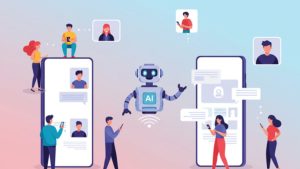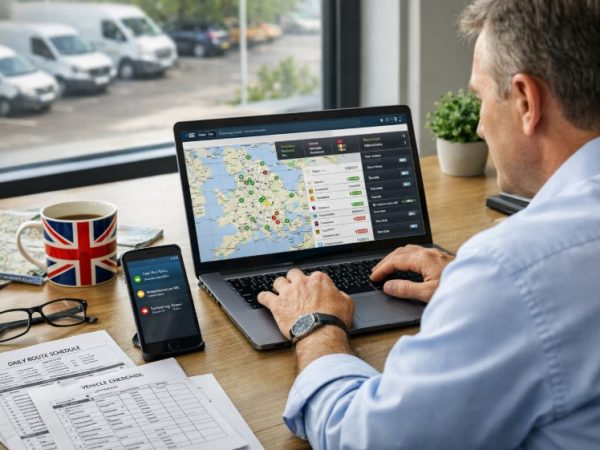
Beyond Automation: Key Technologies Shaping the Future of Business
The business world is in the midst of a profound transformation, one that moves far beyond the simple concept of automating repetitive tasks.
While robotics and basic process automation have certainly streamlined operations, a new wave of interconnected technologies is reshaping the very fabric of how organisations function.
This is no longer about doing the same things faster; it is about fundamentally rethinking business models, creating new forms of value, and fostering unprecedented levels of agility.
From intelligent systems that can learn and adapt to decentralised networks that build trust without a middleman, the future of business is being built on a foundation of innovation and strategic technological integration.
How Are Technologies Shaping the Future of Business Beyond Automation?
Artificial Intelligence and Machine Learning

Artificial Intelligence (AI) and Machine Learning (ML) are at the forefront of this revolution. No longer confined to science fiction, these technologies are now embedded in everyday business functions, from customer service to complex supply chain logistics.
At its core, AI allows systems to mimic human cognitive abilities, such as learning, problem-solving, and decision-making. Machine learning, a subset of AI, enables these systems to automatically improve from experience without being explicitly programmed.
This capability is leading to a new level of process optimisation. For instance, in manufacturing, AI-driven systems can analyse real-time data from machinery to predict equipment failure before it occurs, shifting maintenance from a reactive to a proactive model.
This predictive maintenance minimises costly downtime and increases operational efficiency.
On the commercial side, AI algorithms analyse vast datasets of customer behaviour to provide hyper-personalised product recommendations and marketing content, dramatically enhancing the customer experience and driving sales.
Cryptocurrency and Digital Finance
Cryptocurrency and digital finance are revolutionising the movement of money and reshaping the global economic landscape.
They introduce decentralised, borderless, and permissionless systems for value exchange, challenging the long-standing dominance of traditional financial institutions.
This shift is not merely about new forms of currency; it’s about building a more accessible and programmable financial infrastructure for the digital age.
While often associated with speculative investment, cryptocurrency is a key technology for the future of business, offering new paradigms for financial transactions and value exchange.
For e-commerce, it enables faster, cheaper, and more secure international payments that bypass traditional banking systems. In the online gambling sector, cryptocurrency is used to provide enhanced privacy and faster transactions for players.
The best crypto casinos allow at-home bettors to easily wager online using virtual coins like Ethereum and Bitcoin to play games like poker and roulette.
Similarly, for content creators, crypto allows for seamless and instantaneous microtransactions, enabling new models for monetising digital content without the need for traditional payment processors.
The underlying principles of decentralisation and cryptographic security are paving the way for a new era of digital finance that is more accessible and resilient.
The Internet of Things and Cloud Computing
The Internet of Things (IoT) is the digital nervous system of the modern business world. It refers to the network of physical devices that are embedded with software and sensors, allowing them to collect and exchange data.
This constant stream of information provides an invaluable and granular view of physical operations. In retail, IoT sensors can monitor inventory levels in real time, alerting staff when shelves need restocking and providing insights into customer flow and product popularity.
In logistics, sensors on goods and vehicles provide a live tracking system, ensuring transparency and efficiency throughout the supply chain.
This data deluge would be unmanageable without a robust processing and storage solution, which is where cloud computing comes into play. The cloud is no longer just a place to store files; it is a global platform that provides scalable computing power and a suite of sophisticated tools.
It allows businesses of all sizes to access cutting-edge technology without the prohibitive costs of building and maintaining their own physical infrastructure.
The synergy between IoT and the cloud enables real-time data analysis on a massive scale, turning raw data into actionable insights that can be accessed from anywhere in the world.
Blockchain and Distributed Ledger Technology

While AI and IoT focus on data generation and analysis, blockchain and Distributed Ledger Technology (DLT) address the critical issues of trust, security, and transparency.
A blockchain is a decentralised and immutable ledger that securely records transactions across a network of computers. Every transaction or record is part of a ‘block’ that is cryptographically linked to the previous one, forming an unbreakable chain.
This technology is particularly transformative for industries with complex supply chains. By recording every step of a product’s journey on the blockchain, from its origin to the customer’s hand, all participants in the network have a single, verifiable version of the truth.
This level of transparency helps to combat fraud and counterfeiting, ensuring product authenticity.
Furthermore, smart contracts, self-executing contracts with the terms of the agreement directly written into code, automate business processes, eliminating the need for intermediaries and reducing the risk of human error.
This technology is fundamentally changing how organisations manage relationships and ensure the integrity of their data.
Digital Twins and Virtual Reality
Beyond these core technologies, other innovations are also playing a significant role. Digital twins are virtual models of a physical object, process, or system.
They are created by using real-time data from IoT sensors and are used to simulate performance, test scenarios, and optimise operations in a risk-free environment.
An example is a manufacturer creating a digital twin of a factory floor to test new layouts or a city planner simulating traffic flow to improve congestion. This technology allows for rapid experimentation and innovation without the high costs and potential disruptions of real-world trials.
Paired with virtual and augmented reality, these digital twins can create immersive training environments for employees or allow designers to visualise and interact with products before they are even built.
These tools are transforming design, planning, and training, making them more efficient and effective.
Conclusion
The future of business is not defined by any single technology, but rather by the strategic fusion of many. AI, IoT, cloud computing, and blockchain are not isolated tools; they are symbiotic components of a new digital ecosystem.
They provide the means to gather data, process it into insights, build trust between parties, and simulate future possibilities. For organisations to thrive in this new landscape, they must move beyond simply automating existing processes.
They must embrace a mindset of continuous innovation and realise that these technologies are not just about improving efficiency, but about creating new business models that are more agile, data-driven, and resilient.
The companies that successfully navigate this shift will not only survive the next wave of disruption but will lead it.





